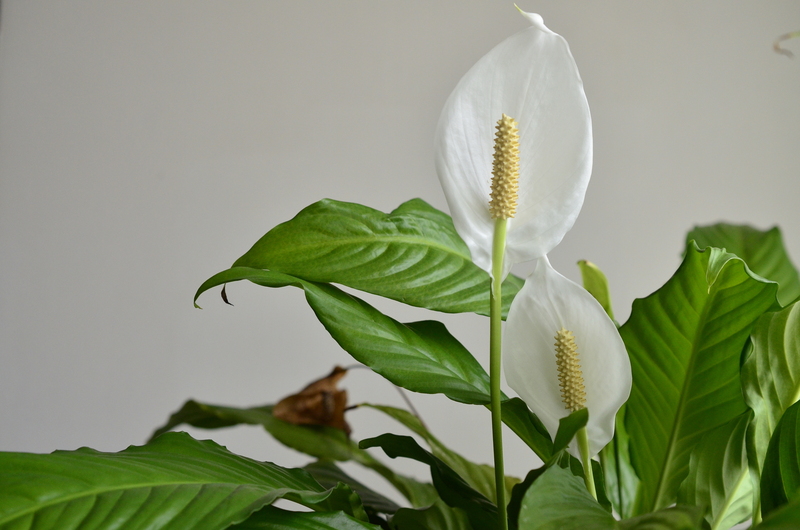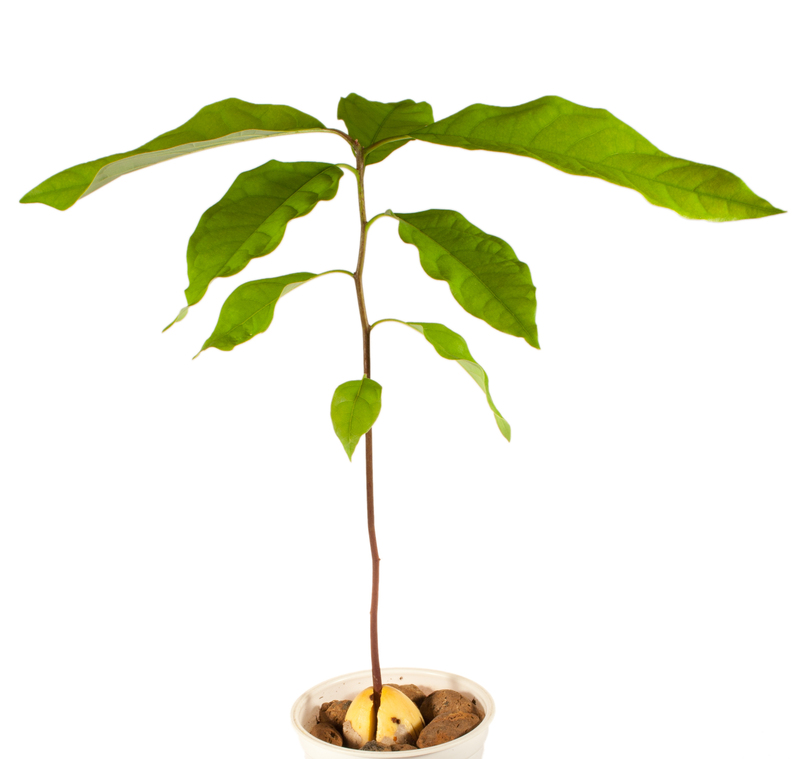How to Design a Garden That Nurtures Young Nature Lovers
Posted on 13/09/2025
How to Design a Garden That Nurtures Young Nature Lovers
Every great gardener was once a curious child. Today's digital age makes it crucial to create outdoor spaces that spark that curiosity in our children. Designing a garden that nurtures young nature lovers is more than just adding some playground equipment and a few plants. It's an immersive, ongoing invitation to explore, play, and connect with the natural world. Whether you have a sprawling backyard or a modest courtyard, you can craft a vibrant, interactive environment to inspire budding ecologists and botanists. Below, you'll find a comprehensive guide to help you design a child-friendly garden that instills a lifelong appreciation for nature.
Why Gardens Are Essential for Children's Development
Connecting children with nature has long-term benefits. Modern research shows kids who have regular contact with the outdoors are healthier, happier, and better equipped to learn. A well-designed garden offers:
- Physical exercise and coordination through digging, running, planting, and exploring.
- Hands-on science lessons about plants, insects, weather, and seasons.
- Boosted creativity and imagination through unstructured play and discovery.
- Social skills from working and cooperating with others in the garden.
- Emotional wellbeing and reduced stress levels from time spent outdoors.
These benefits underline why it's so important to design a garden that encourages children's love of nature--but how do you put the theory into practice?

Principles of Kid-Friendly Garden Design
1. Safety Comes First
Before you let creativity flow, prioritize safety. When designing gardens for children, remove all hazardous elements such as thorny plants, toxic berries, and sharp landscaping materials. Avoid slippery surfaces, and make sure ponds or water features are childproof or securely fenced.
- Choose non-toxic, sturdy plants and shrubs.
- Opt for smooth pathways (mulch, soft turf, or smooth pavers).
- Provide plenty of shade to avoid overheating -- consider kid-safe trees, pergolas, or large umbrellas.
2. Create Zones for Different Activities
Children thrive in gardens that offer a mix of activity and quiet areas. When crafting natural spaces for young nature lovers, divide your plot into zones:
- Discovery zone: For digging, observing bugs, or running water experiments.
- Growing zone: A spot with raised beds or pots for vegetables, flowers, and herbs.
- Wildlife zone: An area with native plants, a bug hotel, bird feeders/baths, and perhaps a small pond.
- Creative zone: Space for art, storytelling, or simply lying on the grass gazing at the sky.
Clearly defined zones make the garden feel varied, while helping kids learn to care for their unique spaces.
3. Incorporate Sensory Experiences
A garden designed to nurture young nature lovers should stimulate all five senses. This keeps kids engaged, helps develop their sensory processing skills, and creates memorable experiences.
- Sight: Include brightly colored flowers, varied leaf shapes, garden art, and mirrors or gazing balls.
- Touch: Grow lamb's ear, ornamental grasses, moss patches, bark, and offer sand or mud play areas.
- Smell: Add fragrant herbs (mint, lavender, thyme) and scented flowers (roses, sweet peas).
- Taste: Plant edible crops like peas, berries, cherry tomatoes, and edible flowers such as nasturtiums.
- Sound: Attract songbirds, install a bubbling water feature, and grow rustling bamboos or grasses.
4. Invite Wildlife for Real-Life Lessons
Creating a wildlife-friendly garden for children delivers hands-on lessons in biodiversity and ecology.
- Include native plants to attract bees, butterflies, and other pollinators.
- Add nesting boxes for birds and bats.
- Go organic, avoiding pesticides that harm wildlife.
- Leave a log or stone pile for beetles, toads, and other small creatures.
Let your garden become a living classroom -- and watch how excited children become when they spot their first ladybug or a butterfly emerging from a chrysalis.
Elemental Features to Include in a Garden for Little Nature Lovers
Edible Gardens: Grow, Taste, Learn
One of the greatest joys for children is eating what they've helped grow. Edible gardens teach kids about cycles of growth, nutrition, and environmental stewardship. Choose crops that are:
- Easy and quick to grow -- such as radishes, lettuces, and sunflowers.
- Colorful and interesting, e.g. purple carrots, rainbow chard, or yellow tomatoes.
- Fun to harvest, like snap peas and strawberries.
- Plants that can be snacked on raw and safely, such as cherry tomatoes and sugar snap peas.
Get kids involved in every stage: planning what to grow, sowing seeds, watering, and finally, harvesting and eating. Child-friendly gardening empowers kids and connects them with their food sources.
Miniature Wildlife Habitats
Encourage children to help create mini wildlife havens:
- Build a bug hotel with stacked twigs, logs, and bricks.
- Create a butterfly puddling station using a shallow dish with wet sand and stones.
- Hang bird feeders and keep a record of visiting birds in a garden journal.
- Fill a small pond or water bowl for frogs and dragonflies, ensuring safety with mesh covers if needed.
This hands-on approach cements a respect for even the smallest creatures.
Secret Spaces and Hideaways
Every child loves a secret spot. Incorporate hidden nooks and leafy hideouts within your garden:
- Plant a willow tunnel or create an archway from climbing beans or sweet peas.
- Construct a teepee or simple den from sticks and fabric.
- Leave part of a hedge untrimmed for a magical shaded corner.
- Install large pots or upturned logs as seating "islands."
These spaces foster a sense of independence, imagination, and belonging.
Natural Play Features
While classic play sets have their place, nothing beats features made from natural materials:
- Balance beams or stepping stones made from logs or stumps.
- Rock piles for climbing or bug-searching.
- Mud kitchens for messy, creative fun.
- Sand pits edged with wood or stone.
- Paths winding through tall grasses for adventurous journeys.
Let children shape part of the garden themselves, whether it's a fairy house, a stick fort, or a homemade scarecrow.
Choosing Plants for a Young Naturalist's Garden
The plant selection in a child-centric garden should be diverse, safe, and sensory-stimulating. Balance edibility, beauty, and ecology:
- Tough, easy-to-grow favorites: sunflowers, nasturtiums, marigolds, snapdragons
- Fragrant and touchable: lavender, rosemary, sage, lamb's ear
- Native species: attract pollinators and require less maintenance
- Fast-growing climbers: sweet peas, scarlet runner beans, morning glories
- Edibles: strawberries, cherry tomatoes, lettuces, peas, carrots, blueberries
Ensure all plants are non-toxic -- avoid foxglove, oleander, lilies, and some bulbs. Teach children to identify plants, and what's safe to touch or taste.
Making Gardening an Ongoing Adventure
Encourage Ownership and Discovery
Let young gardeners make decisions--from picking seeds to decorating plant labels and choosing spots to dig or water. Give them their own kid-sized tools and gloves, and entrust them with responsibilities like watering "their" patch or keeping a bug diary.
- Encourage experimentation: let kids mix seeds and see what grows!
- Start a nature journal or scrapbook, pressing flowers, recording observations, and drawing favorite creatures.
- Plan scavenger hunts themed around colors, textures, or animal tracks.
Design for All Seasons
To keep inspiration alive year-round, select plants for continuous seasonal interest:
- Spring: bulbs like crocus and daffodils, peas, cherry blossom
- Summer: sunflowers, berries, tomatoes, borage
- Autumn: pumpkins, colorful leaves, late-blooming sedums
- Winter: evergreen shrubs, holly, seed heads for birds
Keep a bird feeder out in winter, and try sowing microgreens inside during cold months so the learning never stops.
Celebrate and Share Successes
Host "garden parties" where children can show off what they've grown to family and friends. Make tasting harvests a ritual: a "pea picking picnic" or a "strawberry sundae day." Enter vegetables or flowers in local fairs or share produce with neighbors -- this builds pride and community spirit.
Eco-Friendly and Sustainable Ideas
Model environmental responsibility by gardening sustainably. Children learn by example, so show them how to care for the earth while learning about it:
- Compost kitchen waste and use the compost in garden beds.
- Set up a rain barrel for watering plants.
- Practice mulching and minimal tilling to protect soil microbes.
- Choose drought-tolerant and native plants to conserve water.
- Ban pesticides and use companion planting to deter pests naturally.
Inspire Learning Through Play
Nature-Based Activities for Young Gardeners
- Build a weather station or install a simple rain gauge and thermometer.
- Start a worm farm or compost bin as a mini science lab.
- Try plant-based art -- nature weaving, dyeing with petals, or sculpting with mud and leaves.
- Set up night-time adventures with bat walks and moth spotting by torchlight.
- Organize counting games: tally bees, butterflies, or flower colors.
Let learning arise naturally from wonder, not just worksheets.
Encouraging a Lifetime of Nature Appreciation
A well-planned garden can be the starting point for a lifelong relationship with nature. By intentionally designing gardens that encourage children's love for the outdoors and biodiversity, you plant seeds for stewardship, knowledge, and joy in the world around us.
Children who garden grow up to be adults who care for their planet. By following these steps to design a garden that nurtures young nature lovers, every flower, bug, and muddy adventure becomes a building block in your child's personal connection with the environment.

Frequently Asked Questions
What are the best plants for a child-friendly sensory garden?
Some top choices for sensory appeal and safety include lamb's ear (soft leaves), lavender and mint (scent), sunflowers (visual impact and seeds), berries (taste), and ornamental grasses (sound and movement).
How do I make my garden wildlife-friendly for kids?
Plant native flowers and shrubs, install bird and bat boxes, avoid pesticides, provide a shallow pond or water dish, and create log or rock piles for habitat diversity.
How can I involve children in gardening year-round?
Start with spring seed sowing, summer harvesting, autumn leaf crafts, and winter bird feeding or window-sill herb gardens. Keep journals or scrapbooks, and include children in planning the next season's crops.
Conclusion
Designing a garden that supports the growth of young nature lovers is one of the most rewarding investments you can make for a child's present and future. Focusing on safety, variety, sensory experiences, and small-scale habitats lets you create a backyard paradise where children can dig, explore, play, and learn every day.
With patience, encouragement, and a little dirt under the fingernails, you'll foster curious minds and kind hearts ready to cherish and protect our natural world.

